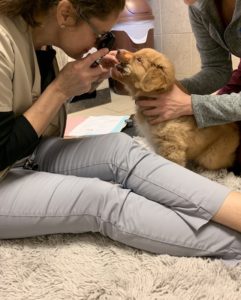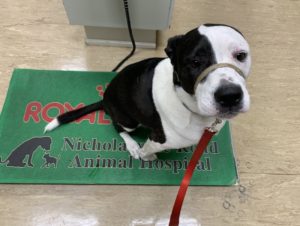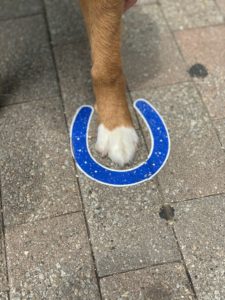“The Training Didn’t Work”
The Training Didn’t Work
I hear it in casual conversation, at the vet’s office, in my daycare, and even from my own clients. “The training didn’t work.”
I must admit, I’m guilty of saying the same thing. With my very first dog, I found myself saying, “the training didn’t work”. I had a little Jack Russell mix named Scooter and he was the dog I did everything wrong with. I’m sorry Scooter, I didn’t know any better, I was learning.
Why didn’t Scooter’s training work? It was the wrong kind of training for him and for me. His training was based on punishment. If he didn’t sit, I was told to jerk on his leash in a swift upward motion until his butt met the floor. Once he sat I was to “reward” him. I wasn’t told how to reward him or how to determine a reward for him. Over time neither one of us enjoyed training. He became a biter due to the stress of impending correction. I became frustrated and increased my corrections.
The next example of why training didn’t work is with all my dogs. I’ve wanted to teach a flashy, formal heel for years. I’ve taken classes, lessons, and watched videos. I don’t have one single dog that will formally heel with a bouncy step and their head up. Why doesn’t the training work? It’s me. Hi. I’m the problem. It’s me. I’ve never followed through. Turns out that only taking bits and pieces of training instr uction doesn’t actually work. You also have to actually do the work and do the work consistently. This means finding time to work with my dogs consistently. Did the instruction of the trainers I worked with fail? No. Did the methods not work? Don’t know. I never followed through.
uction doesn’t actually work. You also have to actually do the work and do the work consistently. This means finding time to work with my dogs consistently. Did the instruction of the trainers I worked with fail? No. Did the methods not work? Don’t know. I never followed through.
Look at the situation with your dog. Did the training not work because of the method or did the training not work because you didn’t put the commitment into it?
According to a study done by Phillippa Lally, a health psychology researcher, “on average it takes 18-254 days for people to form a new habit.” The drastic variability is due to person, the behavior, and the circumstances. The full study was published in the European Journal of Social Psychology.
How to be Successful Training Your Dog
- Does your trainer motivate you and your dog?
- Do you look forward to training sessions with your dog?
- Are you setting attainable goals.
- Why are you training the behaviors you are? Are they must haves or nice to haves?
- Are you working on true training issues or does your dog need behavior modification?
“Train Don’t Complain”
Mandy Eakins CPDT-KA, CPDT-KA


 Most veterinarians understand the importance of having a good trainer as part of their team. Working with a qualified trainer can not only keep dogs in their homes, but they can also help a family choose a new dog. Dog trainers are also a great resource to assist with recovery and healing through the use of mental enrichment while on crate rest or limited activity. We can also help ease the stress of scary vet visits that may keep owners from seeking the medical treatment their dog needs. If I had a chance to to talk with veterinarians, this is the information I would like them to know.
Most veterinarians understand the importance of having a good trainer as part of their team. Working with a qualified trainer can not only keep dogs in their homes, but they can also help a family choose a new dog. Dog trainers are also a great resource to assist with recovery and healing through the use of mental enrichment while on crate rest or limited activity. We can also help ease the stress of scary vet visits that may keep owners from seeking the medical treatment their dog needs. If I had a chance to to talk with veterinarians, this is the information I would like them to know.



